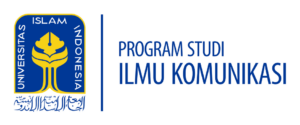Agenda Setting for Historical Analysis of Public Opinion at the AES Forum UII Communication
Is it possible to use quantitative methods to explain a historical process that is highly qualitative? How can the history of public opinion be viewed through an agenda setting perspective? Kunto Adi Wibowo, one of the speakers in a series of scientific discussions at the UII Amir Effendi Siregar (AES) Forum, said that it is possible to do.
“There is one article on how to use this agenda setting as a historical review of public opinion. How is the reasoning of the quantitative agenda setting fit to history which is identical to qualitative,” said Kunto as was broadcast live on the Uniicoms Channel TV on Saturday (24/10).
Kunto, Director of the KedaiKOPI Survey Institute (Indonesian Public Opinion and Discussion Group), said that it is possible to use quantitative to explain a historical process. “We are forced to reconstruct how opinion is distributed within a certain time,” he said.
However, apart from reconstructing how opinion is distributed within a certain time, “secondly we must also answer how public opinion is defined. Then third, the agenda setting also talks about effects,” explained Kunto. “What is the effect of the media / public and policy makers in this historical context. At least, the effort is to reconstruct the impact of public opinion on certain policies,” he added.
Kunto has long focused on research on public science, misinformation, and the effects of algorithms on political opinion and attitudes. Later, this Ph.D. from Wayne State University, received a grant from WhatsApp to research misinformation in the 2019 Election.
Kunto explained three strategies in tracing the history of public opinion. “Now, these are three historical public opinion strategies,” he explained in the Zoom Conference sharing screen that morning.
The three strategies that must be answered are: first, how is ‘agenda setting’ statistical reasoning adjusted to history? Second, how public opinion is defined, then third, issues must also be clearly defined and the relationship between variables understood in the dynamics of opinion formation. Especially the press, their readers and policy makers.
For a long time, actually, the use of agenda setting for historical analysis of public opinion. Kunto gave an example of what G. Ray Funkhouser did in his study in 1973. Funkhouser conducted his research by first exposing several layers of agenda setting.
“He explained the matching of the ‘content analysis’ study in the media with the real world. It turns out that this is not match, media analysis content with real events,” said Kunto disclosing Funkhouser’s research published in the Public Opinion Quarterly.
“Media settings are not the same as, for example, American deaths in Vietnam are actually few. Media settings about racial cases are not the same as real events. Cases of victims of violence between blacks and whites are not as many as news settings,” said Kunto. Funkhouser entitled The Issues of the Sixties: An Exploratory Study in the Dynamics of Public Opinion.
“This explains that the media do agenda setting to create public opinion,” said Kunto. In turn, indirectly, to imitate what Funkhouser did, the history of American public opinion at that time was clearly set by the media setting agenda. Public opinion is controlled and tug-of-war with construction by the mass media.


